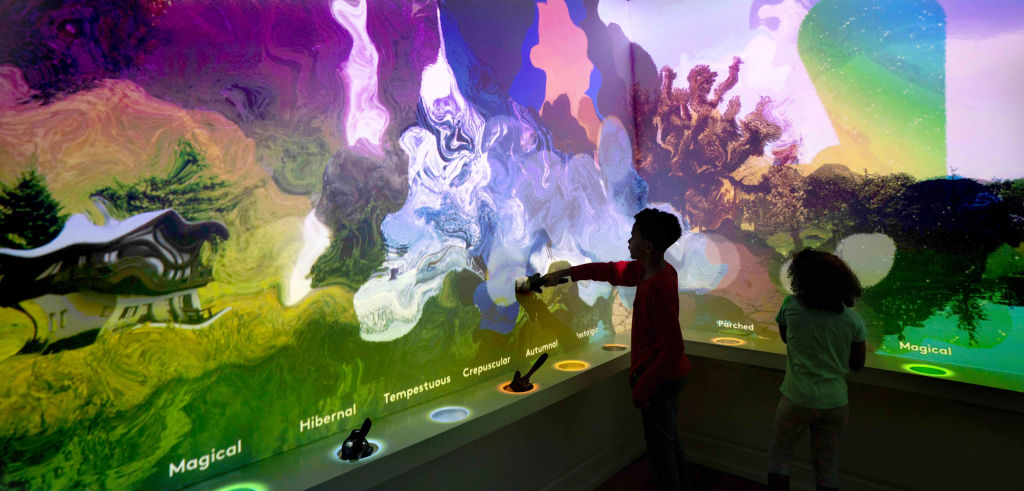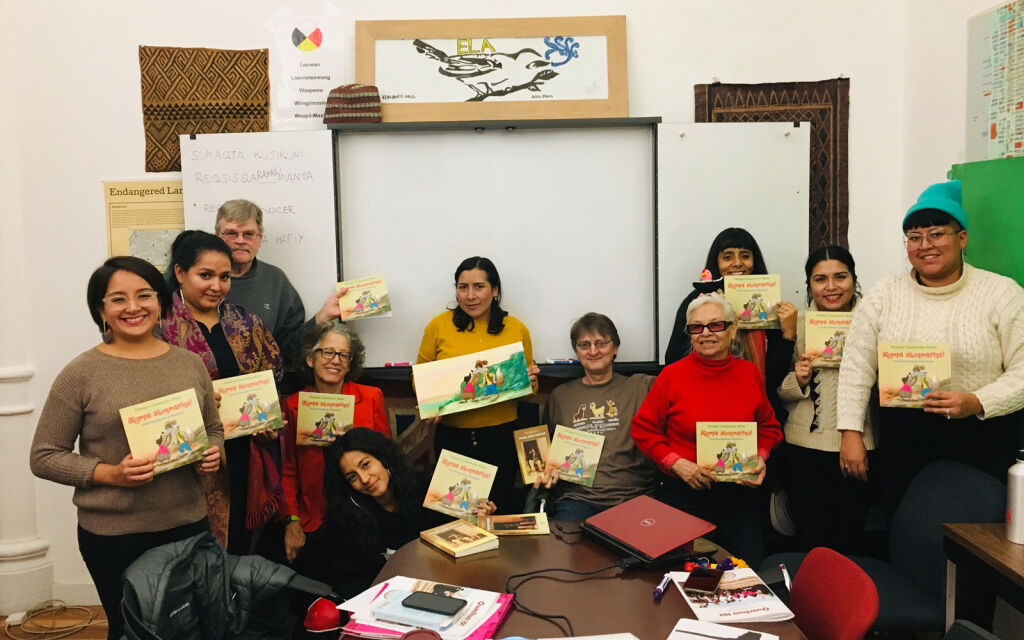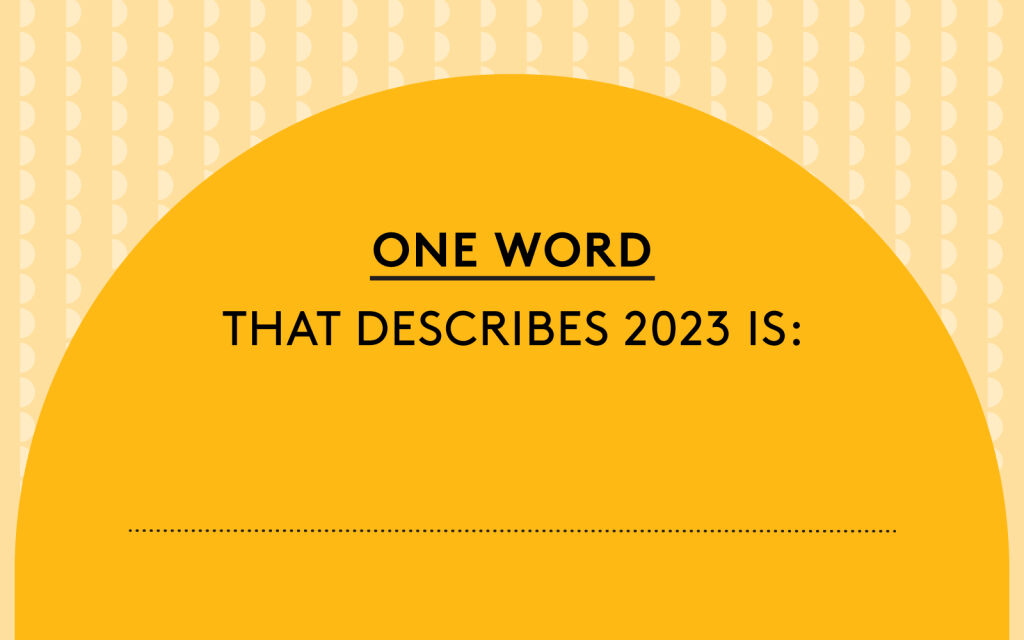What Makes a Great Love Song?
“The Love Song is the noise of love itself.”
— Nick Cave, Australian musician (from a lecture delivered at the Atelierhaus der Akademie der Bildenden Kunste, Vienna on September 25, 1999)
Love is one of the most common themes in music, but why do we love “love” so much? And how can love songs pull on our heartstrings? Australian musician Nick Cave suggests that “[A]ll Love Songs must contain duende. For the Love Song is never truly happy…The Love Song must resonate with the susurration of sorrow, the tintinnabulation of grief.” Love songs embrace the conflict between wanting and not having, and it is this sense of passion and longing — and sometimes even heartbreak — that we are most drawn to. But how do you write song lyrics to make someone swoon?
On February 11, 2021, UCLA English professor (and Planet Word Advisory Board member) Adam Bradley helped us identify some of the most defining characteristics of love songs, which he says are part of a long tradition of love poetry. When it comes to love, “songwriters now have to invent new figures, new ways of saying what people have been saying for millennia now.” Some lyrics that might seem prosaic and corny now, such as Robert Burns’s “O my Luve is like a red, red rose / That’s newly sprung in June; / O my Luve is like the melody / That’s sweetly played in tune,” were fresh and innovative when they were first published.
There are only so many ways to talk about love straightforwardly and only so many ways to rhyme with it — think “of,” “above,” “thereof,” “dove,” “glove,” and “shove,” some of which might sound strange in a love song. As such, in order to make something new and worth listening to, Bradley says songwriters “have to find…other techniques to expand the palette of the words that will work and will enhance our understanding of what love is.” Some of these techniques include slant rhyme and other types of sound repetition (e.g., assonance, alliteration, epistrophe). But “the major technique that they employ is figurative language, metaphor and simile, to…take from something else that’s tangible and connect those properties to the way that we are feeling in the moment about love.”
At the same time, Bradley caveats that songwriters shouldn’t get mired down in technique. The best love songs “have what the Italian call sprezzatura, a kind of a conscious ease and almost a carefully disheveled sense of it in that way, to seem spontaneous, to make it feel like love itself.”
With this in mind, let’s break down the clever techniques used in the lyrics of some of our favorite love songs!
“Love Is Like a Bottle of Gin” — The Magnetic Fields
The Magnetic Fields’ “Love Is Like a Bottle of Gin” uses extended metaphor and simile in conjunction with wry irony to turn the common notion that love is intoxicating on its head. Other love songs that use this theme tend to focus on the liberating aspects of intoxication, rather than the messiness of a bad night out. While this song does not ignore these aspects of both love and gin, it is ultimately much more concerned with the cost.
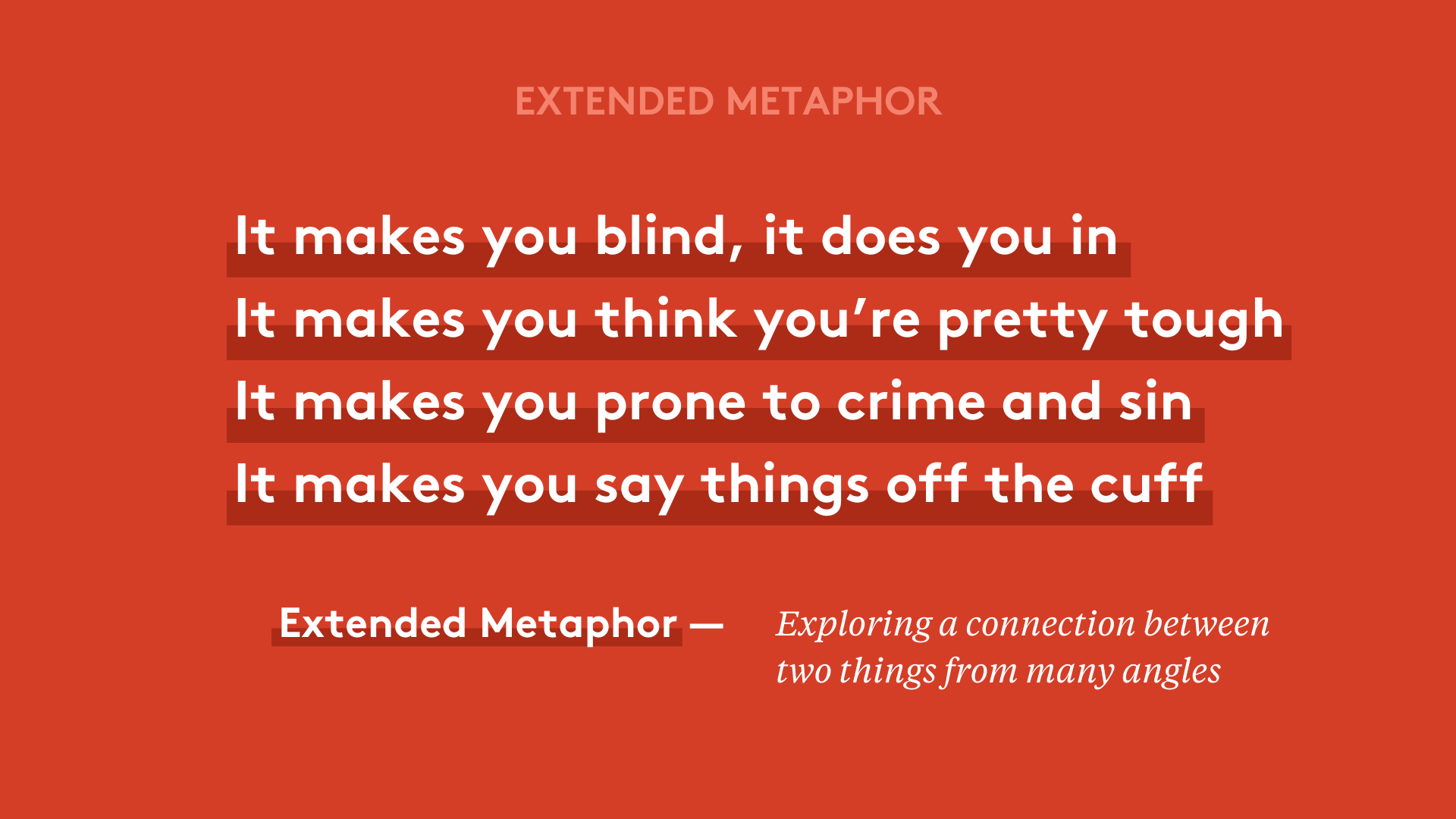
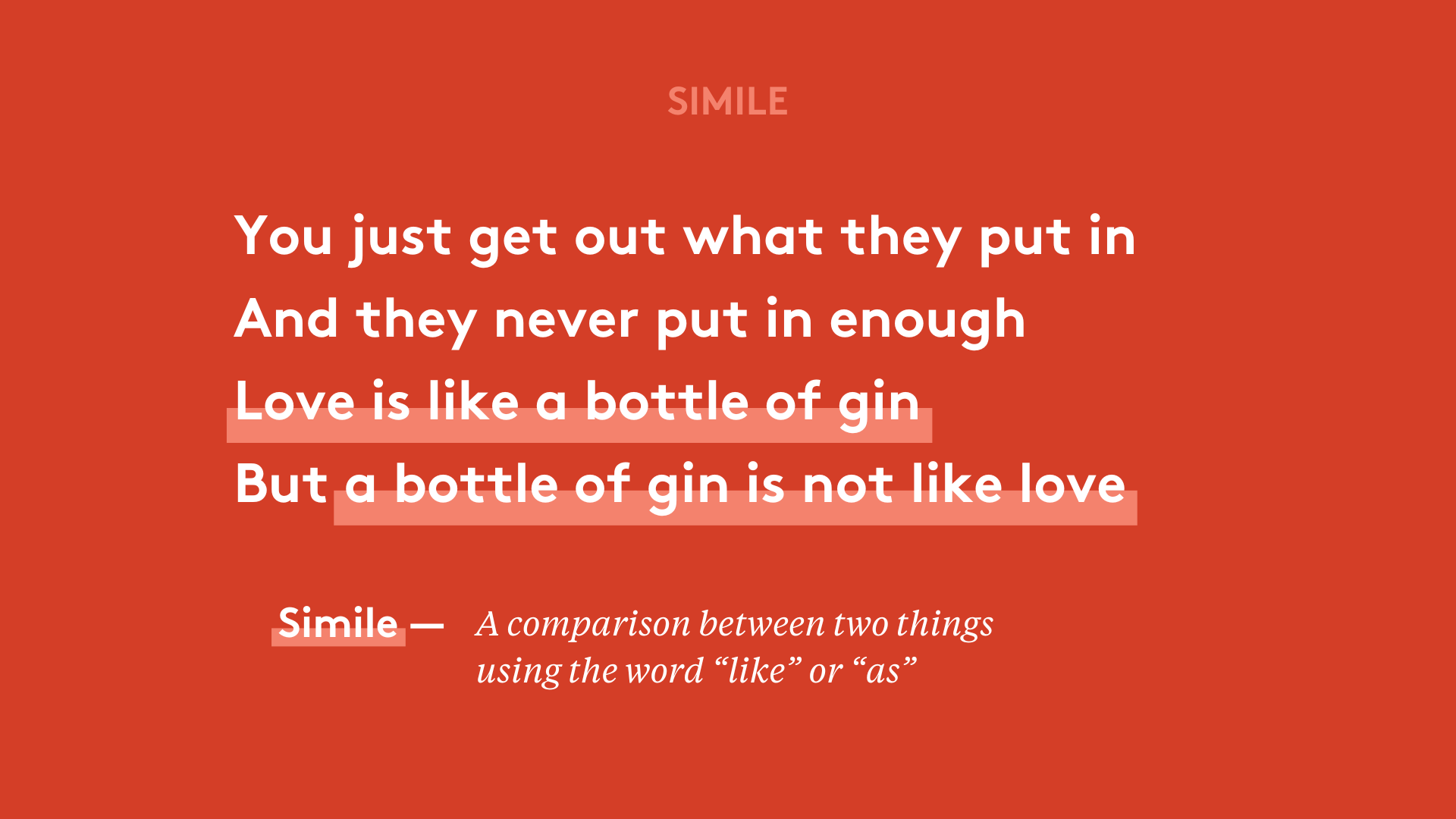
“Let’s Do It (Let’s Fall in Love)” — Cole Porter
Cole Porter’s song “Let’s Do It (Let’s Fall in Love)” is a tongue-in-cheek call for romance. Porter uses double entendre to code his less-than-safe-for-work message, as well as different types of repetition to add an extra layer of playfulness. A prime example of double entendre is at the beginning of the song when Porter uses the ambiguity of the word “blue” — meaning “the color blue,” “melancholy,” and even “bawdy,” as in “blue comedy” — to say that nature is telling us it’s time to fall in love.
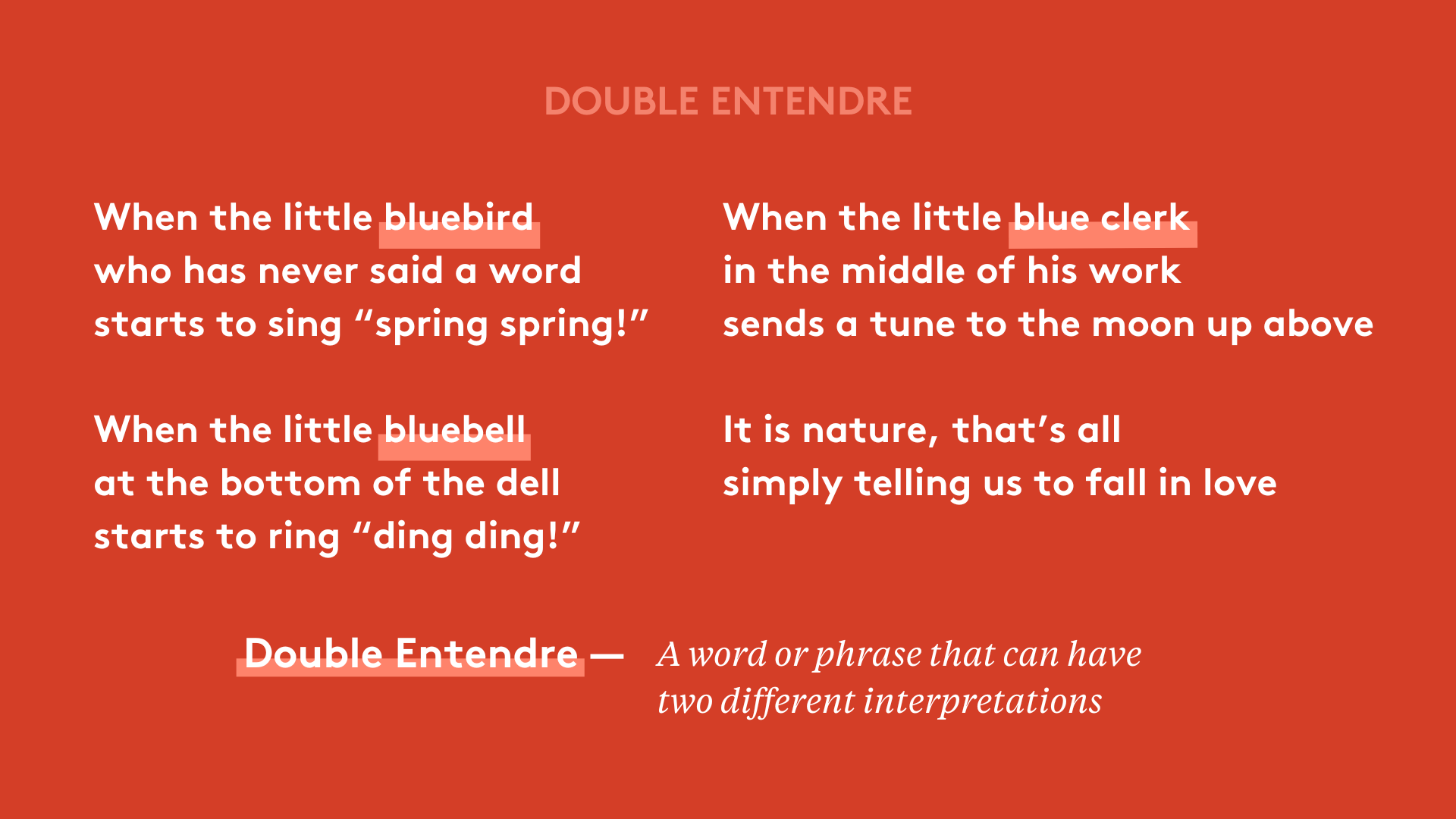
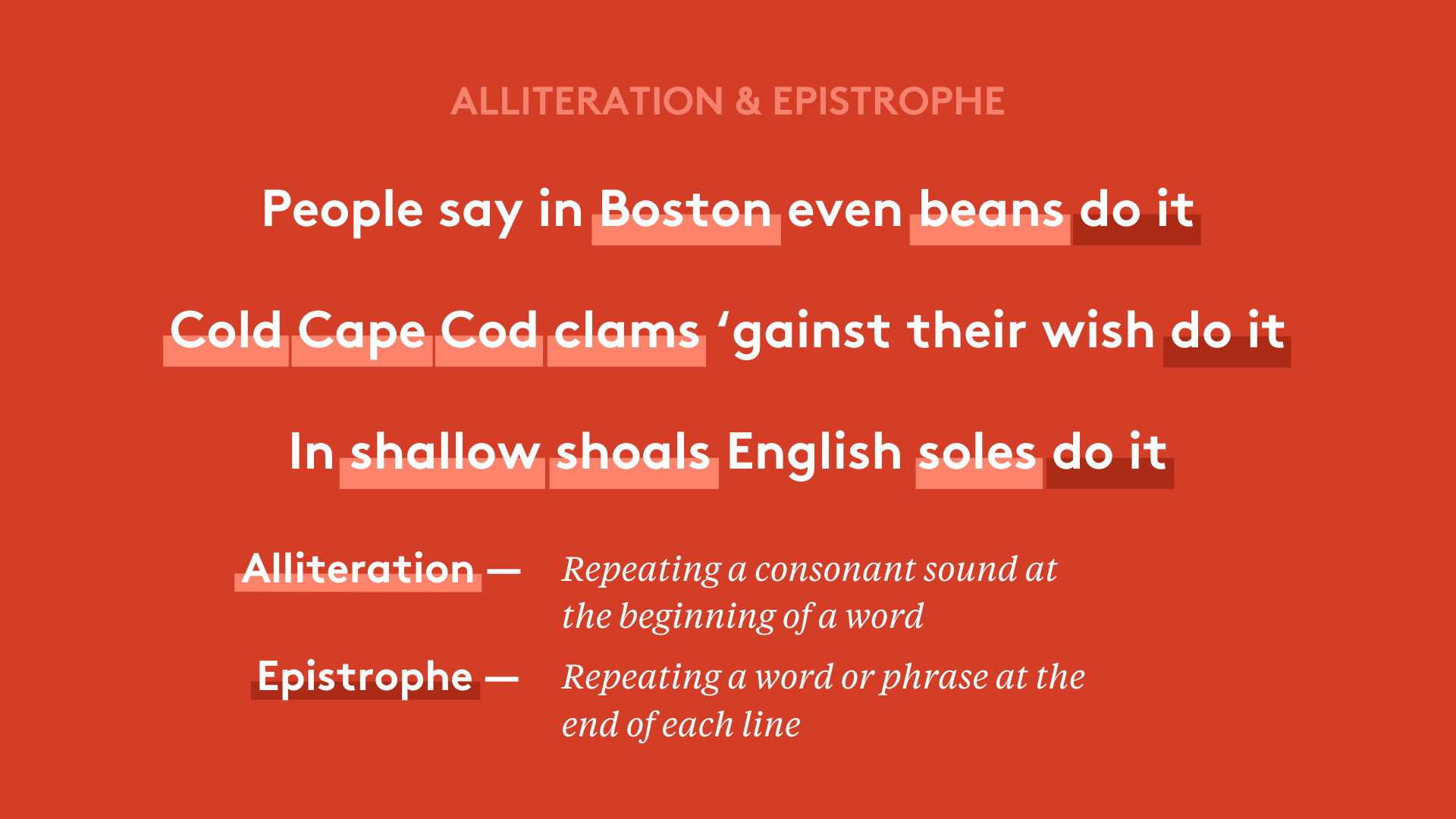
“Helpless” — Lin-Manuel Miranda
In addition to rhyme at the end and in the middle of lines, Lin-Manuel Miranda uses assonance to serve his storytelling in the song “Helpless” from Hamilton. In the song, Eliza wants nothing more than to be in love with this one man, Alexander Hamilton, and have a family with him. Miranda repeats the sound “AI,” echoing Eliza’s name, across numerous lines to emphasize her longing and create tension.


“Stereo Hearts” — Gym Class Heroes (ft. Adam Levine)
“Stereo Hearts” by Gym Class Heroes leans into the corniness of love songs, primarily using different types of rhyme — notably, slant rhyme and mosaic rhyme, both of which are very common in rap — within the extended metaphor of the singer’s heart being an old-school boombox.
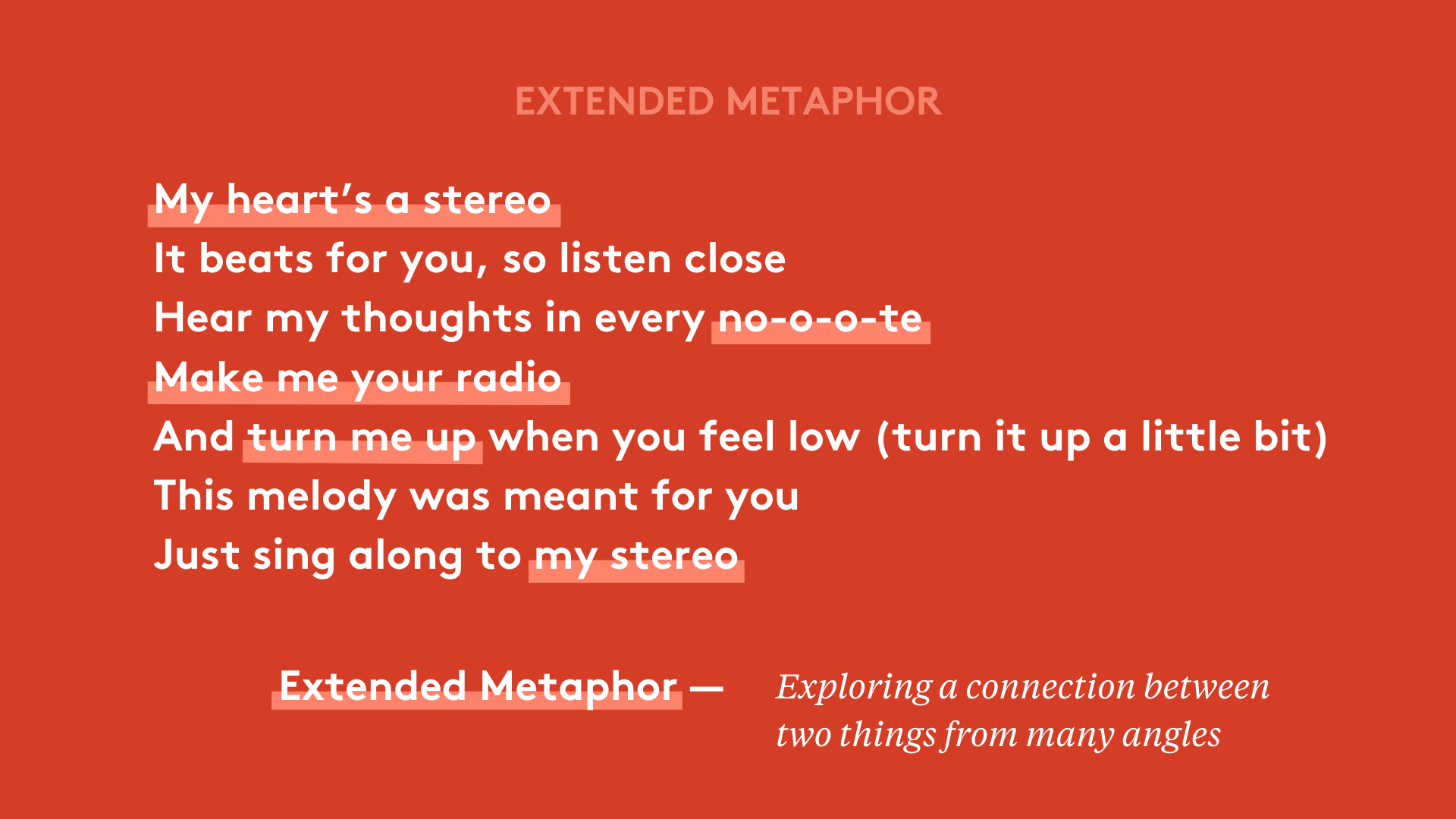
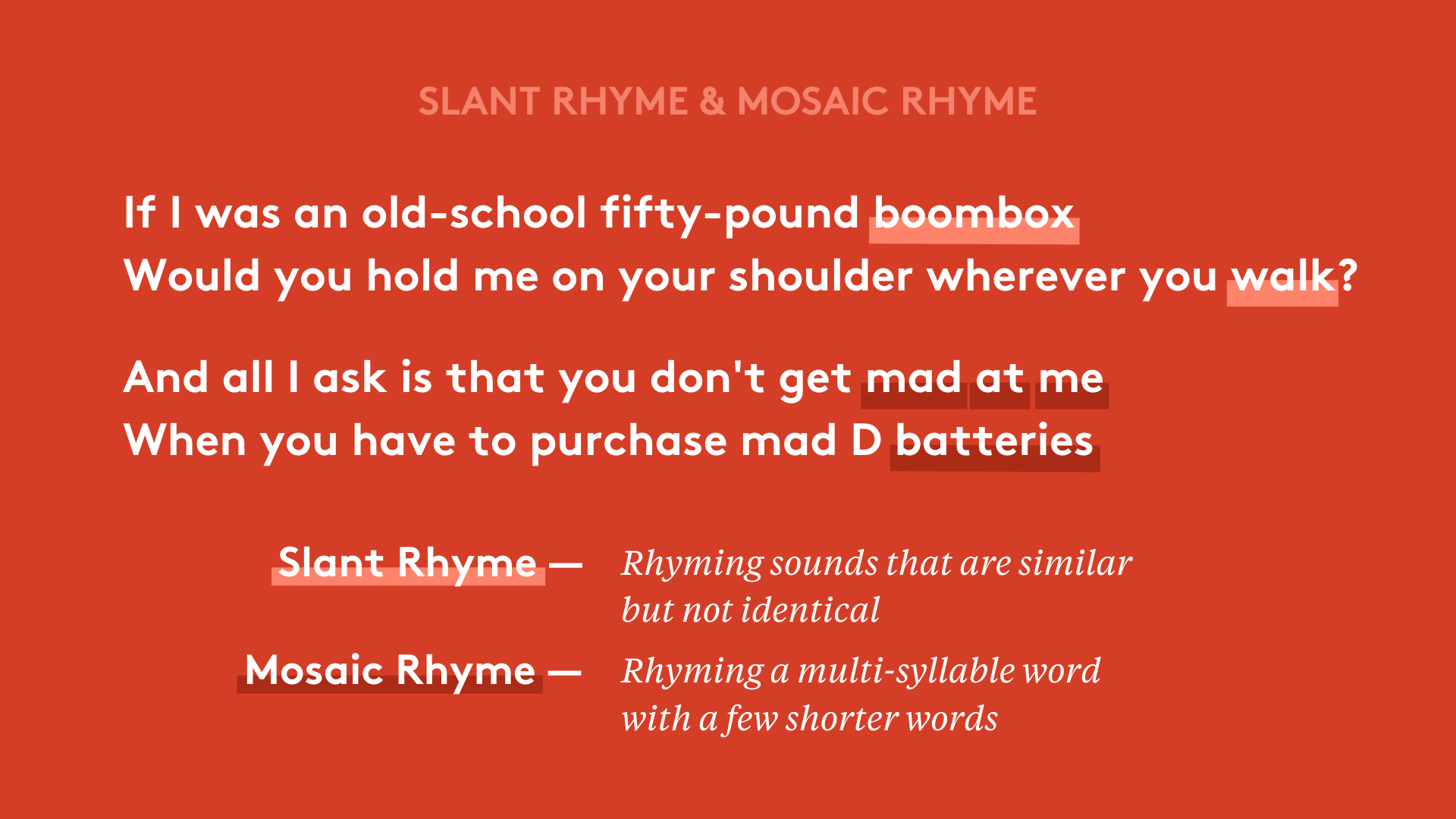
“Drop the Pilot” — Joan Armatrading
In her song “Drop the Pilot,” Joan Armatrading uses anaphora to persistently ask the person she loves to drop their current partner and choose her instead. In doing so, she contrasts herself with a catalog of people from different professions to say she is a better match.
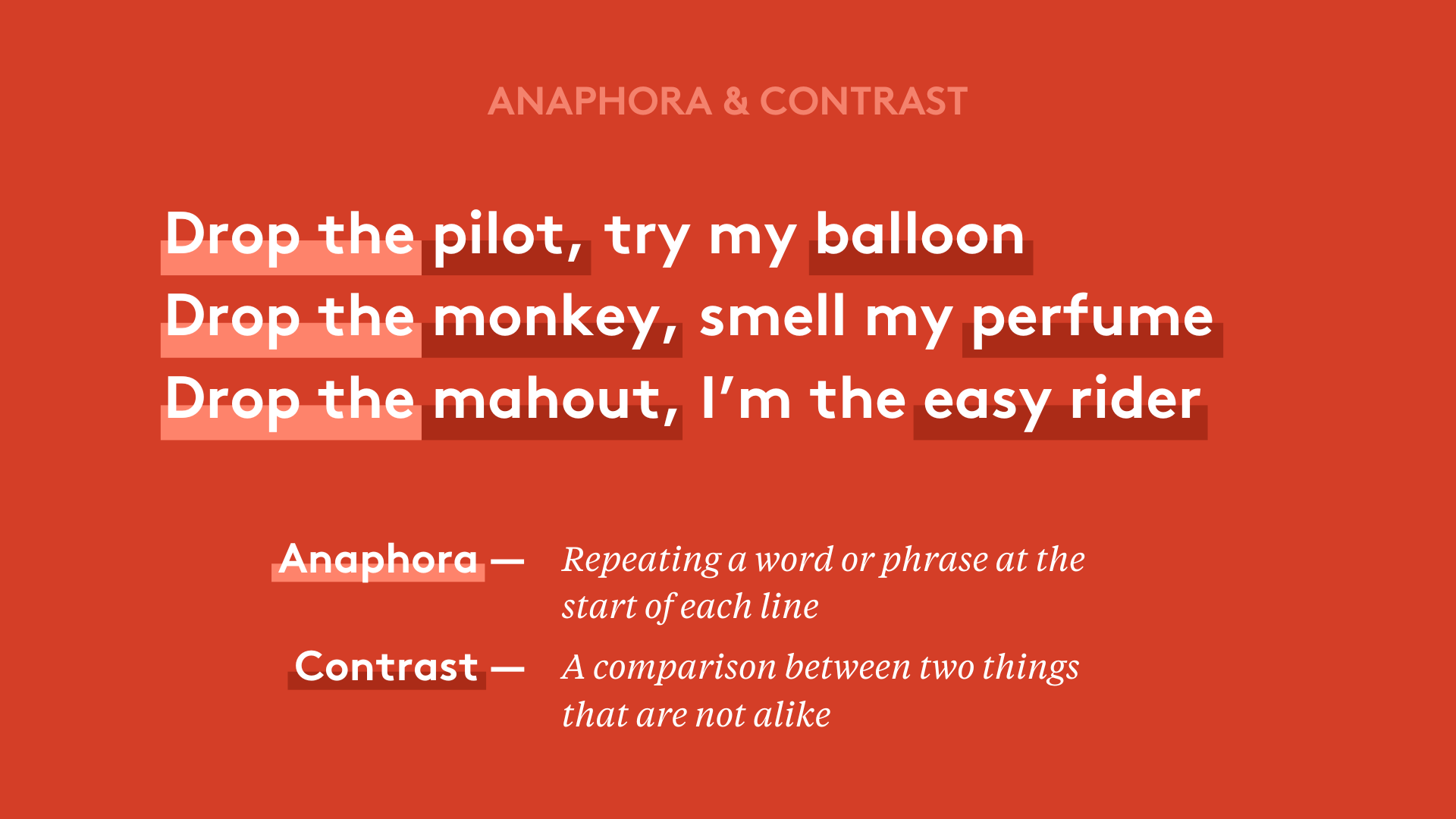
What love songs make you swoon? Let us know on social media by tagging @PlanetWordDC or #PlanetWord.
This blog post is adapted from a virtual program held on February 11, 2021.
Adam Bradley is a Professor of English at UCLA and Planet Word advisory board member. He was instrumental in developing our karaoke-style Unlock the Music gallery, where you learn about the songwriting techniques used in songs as you sing along.

